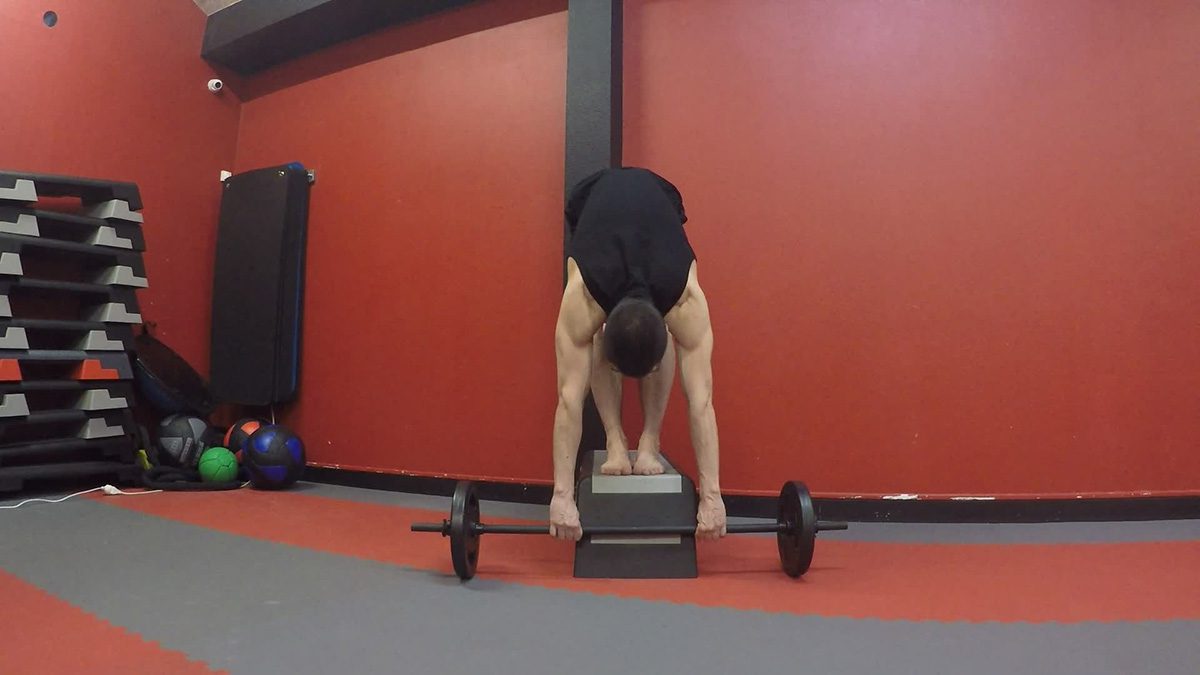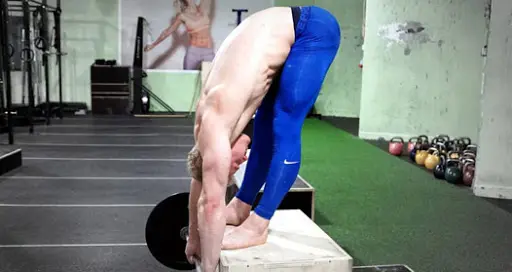
The best online fitness resource you'll ever need. We filter out the BS to ensure you meet your health and fitness goals!

The best online fitness resource you'll ever need. We filter out the BS to ensure you meet your health and fitness goals!

The Jefferson curl is a very controversial back flexion and extension exercise. Proponents like it for its ability to strengthen the spine and improve back and hip mobility, either for preventative or remedial therapy or for performance. Detractors dislike it for the unhealthy load it puts into the spinal discs and the mechanically unsound positions in which it forces the practitioner to perform, both of which can lead to serious injury.
A form of weighted mobility exercise, the Jefferson curl can be counted amongst the most efficient drills for combatting tight, weak muscles through the posterior chain: this means they release tension and stretch the entire backside of your body, including the calves, hamstrings, back, and neck.
As we are an increasingly sedentary society who spend the majority of our time sitting, this is to be celebrated: we all need to actively work on maintaining mobility and strength through our back. Rounded, tight, weak back muscles and hamstrings are amongst the leading causes of back pain and discomfort.
As they are a weighted mobility movement, Jefferson curls are conducted under load, usually in the form of a handheld kettlebell or set of dumbbells.
This resistance means both that you will go deeper into the move, as the weight pulls you further into the stretch and into a range of motion otherwise perhaps unattainable, and that the reverse movement, as you straighten, is a load bearing exercise that should lead to muscular overload and thus hypertrophy and strength gains through the whole posterior chain.
Though they can be quite intimidating to begin, Jefferson curls are easy enough to become proficient in and the weighted stretch should become more achievable as your body learns to relax into it.
It is important to warm up before any stretching: it is especially so with Jefferson curls. We will look into the potential risks and dangers inherent to them below.
You will need a box, step or bench alongside a couple of light dumbbells or a light kettlebell (or any other weight you have to hand, preferably around 8-12kg or so, depending on your own comfort).
To perform Jefferson curls:
Don’t begin a workout with Jefferson curls- they will weaken your posterior chain, compromising its integrity and its ability to bear load safely and effectively. Rather, keep them for the end of a workout or even consider using them as an active recovery protocol on your off days.
Finish a posterior chain, lower body or back workout with a few sets at low- to moderate- rep ranges. As the movement should be slow (as slow as is practical and comfortable, for the best results) you won’t need to perform many. 6-12 will suffice, for perhaps 2-3 reps.
Though you will likely predominantly feel Jefferson curls in your lower back and hamstrings, it will be your head and neck position that will ultimately determine how effective and successful they are. This is because your head and neck will both begin and end each repetition, thus setting the tone for the whole rep.
Allow your head to hand low, keeping your upper back and shoulders relaxed by pressing your hips slightly forwards and rounding the upper back, tucking your chin in to your chest.
In addition, you will need a stable core to remain safe with Jefferson curls. Core engagement will begin as you tuck your chin down to your chest but remain conscious of abdominal activation throughout as much as possible.

We have seen that the Jefferson curl has its uses. It provides light loading through the muscles of the spine to strengthen the back through a wide range of motion. The added weight allows you to get deeper into a forward bend than you would otherwise manage, allowing for a deeper stretch, especially through the lower back and hamstrings.
Using the Jefferson curl regularly can therefore keep your spine strong and your hips and back mobile, whilst aiding range of motion through the full posterior chain.
However, loading your body through lumbar flexion is foolhardy. Lumbar flexion is intimately linked to lumbar disc bulge, especially when conducted to excessive degrees and under load. Placing tight muscles under load through a full range of motion and keeping them in such a mechanically precarious position as the Jefferson curl requires opens them up to injury, including strains, pulls and tears, especially through connective tissues.
Lumbar disc and connective tissue receive low blood flow. This means that they take a long time to heal. They are also vital to most large movements, meaning that an injury will represent a long time out of action, with quality of life drastically impaired.
There is no doubt that the Jefferson curl can be useful. There is also no doubt that it is dangerous. There are many more styles of stretch for the posterior chain (including simple forward flexion unloaded) that carry a much happier risk to reward ratio. It may be best to go with one of these unless you have a real need to include the Jefferson curl in your routine.